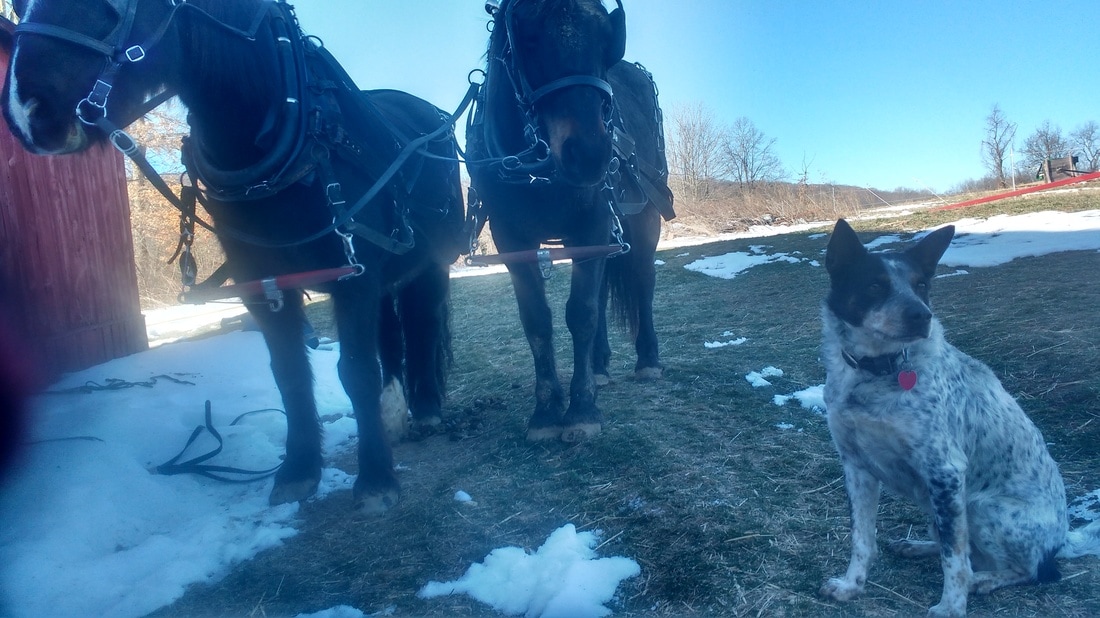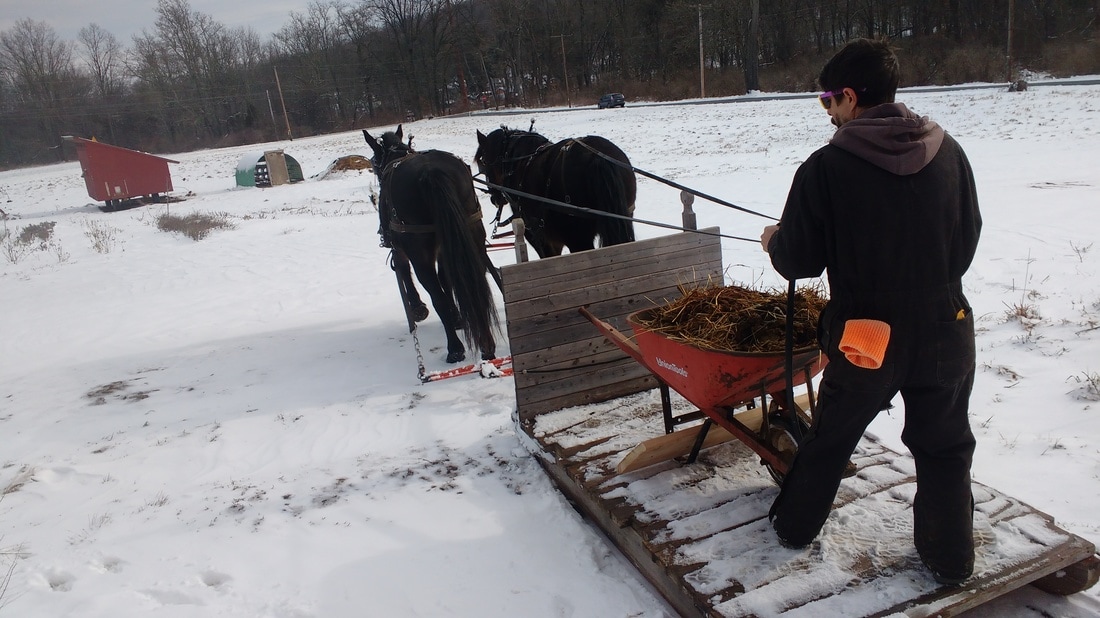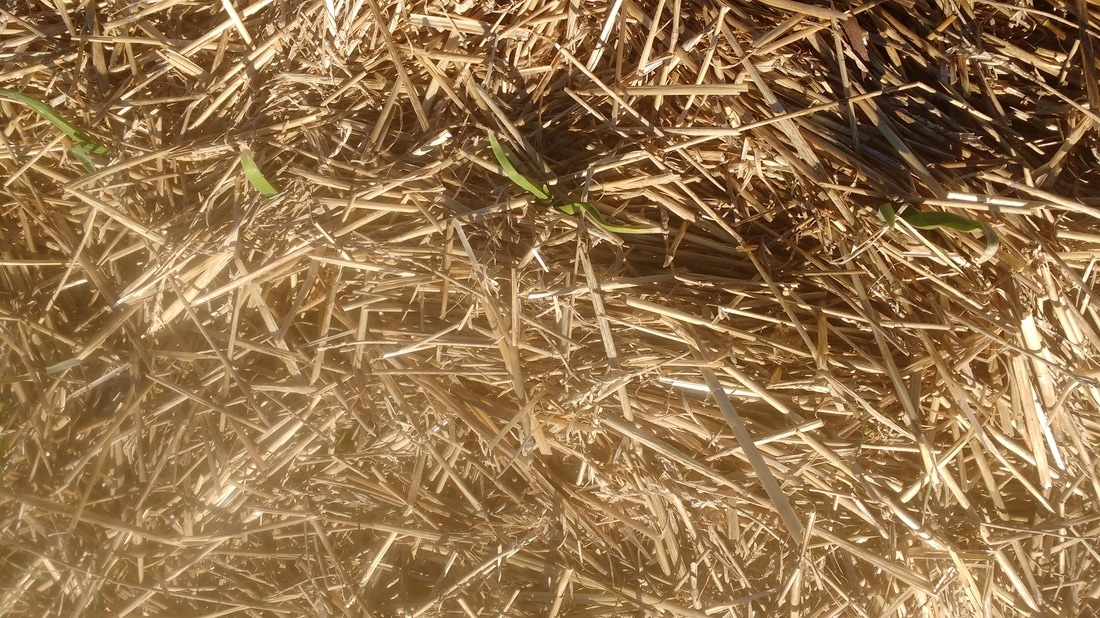 In the quiet, stillness, of winter (which some days this year felt a lot like Summer), and now the longer-days of Spring (which some days have felt a lot like Winter), we await the unfolding of what is to come. But if waiting implies passivity, than I am mistaken, because we are busy in our waiting. What does a vegetable farmer do in Winter? We're asked this a lot in fall, when we're as well-worn, dirty, and broken-in as our work pants, and fantasizing about a couch, a bubble bath, a cup of tea, and a three-month-long date with Quickbooks and Excel Spreadsheets. The answer is some combination of: plan, buy, think, budget, market, plan some more, and buy some more. We work to craft a crop-plan for the Spring that will allow for flow, grace, mistakes, and schedules to be more-or-less followed while honoring the individuality of the season. But this particular Winter, our schedule and goals are a little different. What does a farmer who is pausing from their farming do in Winter? Though it is true we are stepping back from the direct activity of running Good Work Farm in this next growing season, we are actively building the vision of a farm that could sustain our family and this community for years to come. We have found a piece of land, a willing seller, and are working towards a creative model of land tenure that will keep resilient farming alive in Zionsville, and farmland affordable for farmers, for this generation of young farmers, and those that come after us. Aside from fulfilling our mission of securing a permanent home for Good Work Farm, Anton will be working for John and Aimee Good of The Good Farm CSA for this growing season; Lisa will be working for Switchback Pizza, The Good Farm, and Ledamete Farm. We bear generous visions for ourselves and this eating community, and hold them with the faith that our CSA members—families who have been with us for 6 seasons and members we have yet-to-meet—will want to eat the food we grow in years to come. Our CSA community is a community of people who value food that comes out of their landscape, and have great affection for that landscape. The leap of faith of any small business owner toward launching their vision is frightening; as we transition our farm to a new home over the next year, we face and overcome the doubts that are embedded within a re-imagining of one's self that stretches one's concept of what is possible. What we are asking the universe, our community, and our selves seems pretty darn big: have patience with us as we transition, maintain the faith alongside us that the place we find to situate our farm on will be here, share with us in eating the food of the landscape for whom you feel great affection. As a reassurance to myself, a reminder that what I am doing is not particularly special, not particularly bold, and there is nothing to be nervous about, I recall that I'm just growing food. Humans have been doing it since at least 15,000-13,000 B.C. with the domestication of pigs and rice. If people are hungry for the food we grow and the way we grow it, then people will come eat this food and support our ability to live while doing this work. The knowing where one's food came from and knowing one's farmer formed the concept out of which the “local food movement” emerged. It became cool to go the farmer's market, kale chips became a necessary accessory to any outfit, and farm-to-table became all the rage. But cool always fades; what will take the place of this cool is the reality that local eating offers a practical, participatory, and integral way of living within one's community. A local farmer cannot compete with corporate box stores for pricing, and struggles to contend with pre-measured, home-delivery meals for convenience, but what we can offer is a holistic approach to eating—food that comes out of the place that you call home. Local food is grounding food to eat: it places you within the context of the landscape that sustains you, it spiritually nourishes you by reminding you what it means to be human, it places you in direct economic relationship to your community—the money that you have worked hard to earn can be of benefit to the faces, flora, and fauna you know, it serves the well-being and integrity of your body by offering you rich and trusted nutrition. I live here. You live here. When we eat the food of here, we taste where and who we are, we move ourselves one meal closer toward experiencing the independence that comes with knowing where our food came from, who grew it and how, what it means to them to grow it, and what it means to you to eat it. I do not believe that local food can be a fad, or even a movement. I believe local food must, and will, just become what eating is. Garlic popping out of the ground on March 23rd!  Mucking stalls in the snow... re-inventing the proper winter use of the wheelbarrow.
1 Comment
5/30/2019 04:34:41 am
Winter season is a challenging season for all local farmers, and we all know that. Though there is a suffering that's heavily associated with it, I am sure that there's a different kind of story we have to tell about this matter. If we will teach these local farmers the idea of smart adaptability, then there will always be a way to survive during winter season, which is something that you did. For that, I really want to commend you because that was a good thing!
Reply
Leave a Reply. |
Archives
December 2019
FarmersAnton M. Shannon Categories
All
|


 RSS Feed
RSS Feed